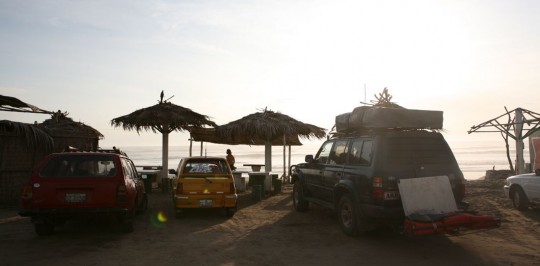
Now that we are three people traveling, we have to be even more careful about water than before. So every day, we fill up our 7-gallon jerry can with tap water – which we use for cleaning dishes and ourselves – and our Coleman shower bag.
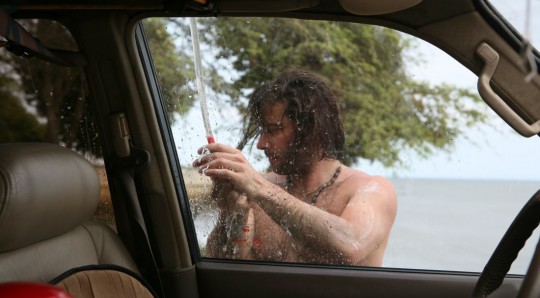
In addition, we make sure to have at least three gallons of drinking water, especially when we are about to cross a desert.
After spending two days at the beach in the Zorritos vicinity, we went back on the road with some difficulties due to the heavy rain in the past days. We left around 2 p.m., after took care some minor fixing on the car, like reinforcing the exhaust pipe attachments, or the back drawers, tired of intensive use in the last three months.
I was now driving toward the Sechura Desert, and we intended to stick along the coast as much as possible in the meantime, to take advantage of beach camping.
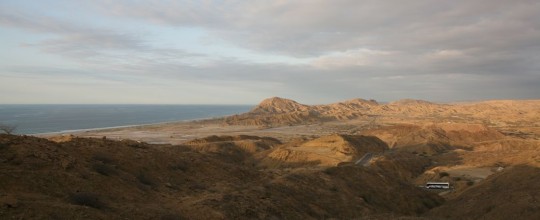
The first afternoon, around the town of Cabo Blanco, we crossed a region of small mountains and hills made of what appeared to be mud. Because we were told the surrounding could be somewhat dangerous, we camped behind a gas station close to Negritos few hours after we left.
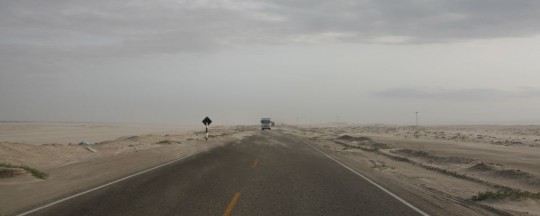
The morning after, we went in town to shop for fish and vegetables, and resumed our trip toward Bayovar. In the afternoon, we arrived in the Sechuran Desert, where an infinite sea of sand awaited us.
Here and there, there were fishermen villages, where puzzled people watched us drive down the bumpy roads. Close to Bayovar, we stopped at a small town famous for their woodwork. We had late lunch there, ceviche as usual. Later in the day, in a fishing village called Playa Blanca (recommended, free camping anywhere), we parked for the night.
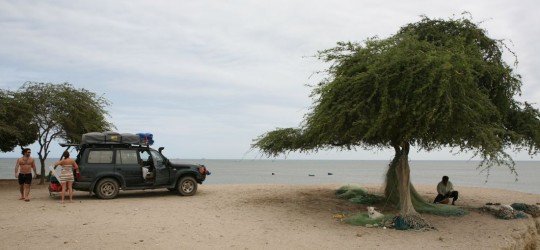
We were close to the cliff, and there cooked the swordfish steaks we bought at the market. Unfortunately, the wind was strong during the night, and as we could not find sleep, we moved the truck more inland around 2 a.m.
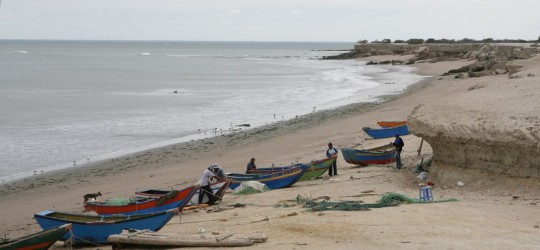
We took off around 11 a.m. the following day, and continued in an even more arid landscape. There was barely anyone driving the road southeast that leads to the Pan-American. You can’t help but think that you would be in a difficult situation if your car breakdown in the middle of the 100-miles wide sandy patch.
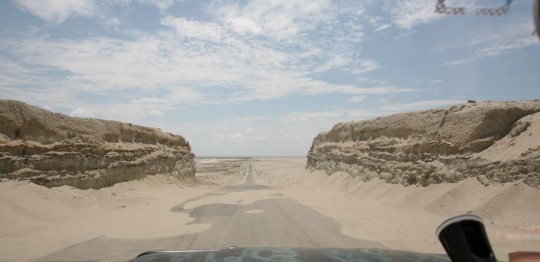
But as always, everything went well for us, and two hours after departure, we were back in an irrigated area were crops such as rice were growing.
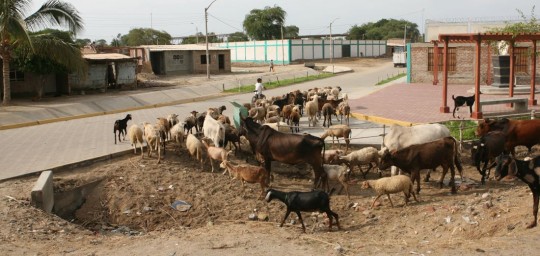
At last, we arrived in Tucume, and visited the ruins of a huge adobe city built over 1,000 years ago.
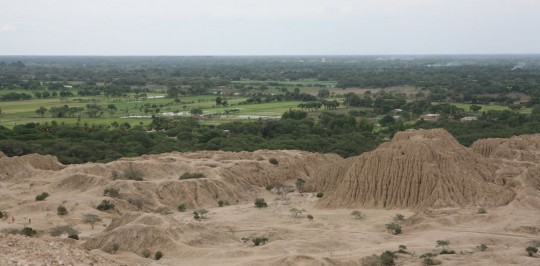
After trying out some traditional food on the site, such as goat stew and corn beer, we drove toward the coast and the town of Pimente, close to Chiclayo. There, we found Playa Rochas, a surfing beach where we decided to spend the night.
